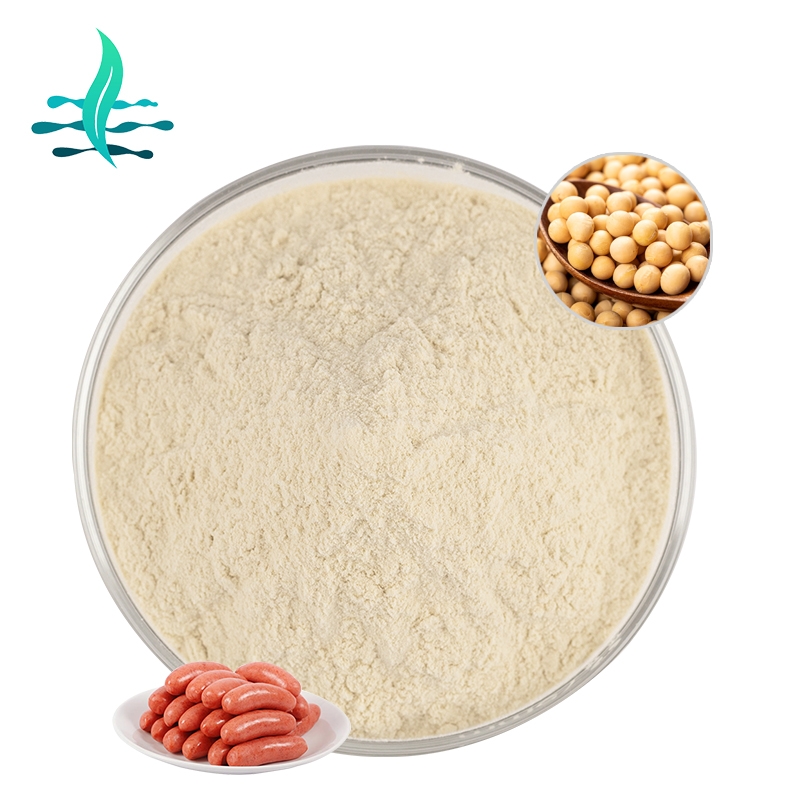-
Categories
-
Pharmaceutical Intermediates
-
Active Pharmaceutical Ingredients
-
Food Additives
- Industrial Coatings
- Agrochemicals
- Dyes and Pigments
- Surfactant
- Flavors and Fragrances
- Chemical Reagents
- Catalyst and Auxiliary
- Natural Products
- Inorganic Chemistry
-
Organic Chemistry
-
Biochemical Engineering
- Analytical Chemistry
- Cosmetic Ingredient
-
Pharmaceutical Intermediates
Promotion
ECHEMI Mall
Wholesale
Weekly Price
Exhibition
News
-
Trade Service
.
On Friday, the Chicago Board of Trade (CBOT) December soft red winter wheat futures fell by about 34 cents, or 4.
7%, from a week ago, to close at 692.
25 cents per cat
.
The December hard red winter wheat futures on the Kansas City Futures Exchange (KCBT) closed at approximately $682.
50 per bus, down 40.
5 cents or 5.
6% from a week ago
.
The December hard red spring wheat futures on the Minneapolis Grain Exchange (MGEX) closed at about 878.
75 cents per bus, down 33.
75 cents or 3.
7% from a week ago
.
Euronext's December 2021 milling wheat period reported about 237.
75 euros/ton, down 6.
75 euros or 2.
8% from a week ago
.
The spot price of Argentine wheat was US$288/ton, up US$1 or 0.
3% from a week ago, FOB price
.
7%, from a week ago, to close at 692.
25 cents per cat
.
The December hard red winter wheat futures on the Kansas City Futures Exchange (KCBT) closed at approximately $682.
50 per bus, down 40.
5 cents or 5.
6% from a week ago
.
The December hard red spring wheat futures on the Minneapolis Grain Exchange (MGEX) closed at about 878.
75 cents per bus, down 33.
75 cents or 3.
7% from a week ago
.
Euronext's December 2021 milling wheat period reported about 237.
75 euros/ton, down 6.
75 euros or 2.
8% from a week ago
.
The spot price of Argentine wheat was US$288/ton, up US$1 or 0.
3% from a week ago, FOB price
.
U.
S.
Department of Agriculture raises global wheat production forecast
S.
Department of Agriculture raises global wheat production forecast
The September supply and demand report released by the United States Department of Agriculture showed that the wheat production forecasts for Australia, India and China in 2021/22 were raised by 1.
5 million tons, 1.
5 million tons, and 900,000 tons, respectively, which exceeded the 1 million tons reduction in Canadian output and the Argentine output reduction.
The downward adjustment of 500,000 tons has improved the outlook for global wheat supply.
Global wheat production is expected to be 78.
28 million tons, which is higher than the previous month's forecast of 776.
91 million tons and the previous year's 777.
83 million tons
.
5 million tons, 1.
5 million tons, and 900,000 tons, respectively, which exceeded the 1 million tons reduction in Canadian output and the Argentine output reduction.
The downward adjustment of 500,000 tons has improved the outlook for global wheat supply.
Global wheat production is expected to be 78.
28 million tons, which is higher than the previous month's forecast of 776.
91 million tons and the previous year's 777.
83 million tons
.
The global wheat consumption data for 2021/22 was revised up by 3 million tons to 789.
6 million tons, and most of the increase was concentrated in feed and other consumption
.
Since the increase in production exceeds the increase in consumption, the global wheat ending stocks for the 2021/22 season are expected to be 283.
22 million tons, higher than the 279.
06 million tons predicted last month, but still lower than the 292.
56 million tons in the previous year
.
6 million tons, and most of the increase was concentrated in feed and other consumption
.
Since the increase in production exceeds the increase in consumption, the global wheat ending stocks for the 2021/22 season are expected to be 283.
22 million tons, higher than the 279.
06 million tons predicted last month, but still lower than the 292.
56 million tons in the previous year
.
Australian wheat yields for the second year in a row, and the prospects for rainfall in the next three months are optimistic
The Australian Bureau of Agricultural Resources, Economics and Sciences (ABARES) raised its forecast for Australian wheat production to 32.
61 million tons this week, setting a record for the second time in history
.
61 million tons this week, setting a record for the second time in history
.
According to ABARES, the growth conditions during June and July were exceptionally good, with sufficient soil moisture in most areas and average or above average rainfall
.
Growing conditions during the winter mean that yield potentials in most areas reach average or exceed average levels in early spring
.
Although rainfall decreased in August, sufficient soil moisture helps crop growth
.
.
Growing conditions during the winter mean that yield potentials in most areas reach average or exceed average levels in early spring
.
Although rainfall decreased in August, sufficient soil moisture helps crop growth
.
The long-term weather forecast issued by the Australian Bureau of Meteorology on September 9 shows that the spring rainfall in eastern Australia and South Australia will be above average in the next three months, providing the necessary moisture for winter crops entering the mature period
.
It is worth mentioning that the rainfall in Australia tends to increase in La Niña years
.
.
It is worth mentioning that the rainfall in Australia tends to increase in La Niña years
.
The hot and dry weather in the plains of the United States is good for harvesting, but not good for winter wheat growth
The US Department of Agriculture's weekly crop progress report shows that as of September 5, 95% of the US spring wheat harvest has been completed, which is higher than the five-year average of 83%
.
The planting of winter wheat in the United States is 5% complete, which is higher than the five-year average of 3% over the same period
.
.
.
The planting of winter wheat in the United States is 5% complete, which is higher than the five-year average of 3% over the same period
.
.
Meteorological data released by the U.
S.
government showed that the heat wave in the plains of the United States reached its peak on September 10, with temperatures reaching 37.
7 degrees in parts of the central and southern plains, and temperatures above 32 degrees in most areas
.
Hot and dry weather is conducive to field work and summer crop maturity, but reduces the available water for the recently sown winter wheat
.
In the next five days, the southern weather will be dry, and there will be sporadic rainfall in the northern half, but most areas will receive less than an inch of rain
.
From September 15th to 19th, the temperature in other parts of the country except the Northwest and the Pacific Northwest was relatively high
.
S.
government showed that the heat wave in the plains of the United States reached its peak on September 10, with temperatures reaching 37.
7 degrees in parts of the central and southern plains, and temperatures above 32 degrees in most areas
.
Hot and dry weather is conducive to field work and summer crop maturity, but reduces the available water for the recently sown winter wheat
.
In the next five days, the southern weather will be dry, and there will be sporadic rainfall in the northern half, but most areas will receive less than an inch of rain
.
From September 15th to 19th, the temperature in other parts of the country except the Northwest and the Pacific Northwest was relatively high
.
Brazil's wheat production is lowered, but it is still 20% higher than the previous year
This month, the Brazilian National Commodity Supply Company (CONAB) expects 2020/21 Brazilian wheat production to be 8.
16 million tons, which is lower than the 8.
59 million tons predicted last month
.
As the harvest has entered a critical stage, severe weather in several wheat producing areas has led to lower production expectations
.
Frost and drought also damage wheat crops
.
However, the reduced wheat production is still 20.
8% higher than the 2019/20 season, because the wheat crop suffered more severe damage from severe weather last year
.
16 million tons, which is lower than the 8.
59 million tons predicted last month
.
As the harvest has entered a critical stage, severe weather in several wheat producing areas has led to lower production expectations
.
Frost and drought also damage wheat crops
.
However, the reduced wheat production is still 20.
8% higher than the 2019/20 season, because the wheat crop suffered more severe damage from severe weather last year
.
Russian wheat tariffs continue to rise, production drops
The Russian Ministry of Agriculture continued to increase the export tariffs on wheat.
From September 8 to 14, the benchmark price of Russian wheat and blended wheat was US$266.
5 per ton, and the export tariff was US$46.
5 per ton
.
In contrast, the benchmark price from September 1 to 7 was US$256.
4, and the export tariff was US$39.
4 per ton
.
From September 8 to 14, the benchmark price of Russian wheat and blended wheat was US$266.
5 per ton, and the export tariff was US$46.
5 per ton
.
In contrast, the benchmark price from September 1 to 7 was US$256.
4, and the export tariff was US$39.
4 per ton
.
This week, the Russian Grain Association lowered the forecast of Russian cereal production in 2021 to 118 million tons, of which wheat output exceeded 75 million tons, which was lower than the initial forecast of 82 to 93 million tons, due to bad weather in some areas, which led to a decline in crop yields
.
Last week, consulting agency SovEcon lowered Russia's wheat production in 2021 by 800,000 tons to 75.
4 million tons because of low spring wheat yields
.
.
Last week, consulting agency SovEcon lowered Russia's wheat production in 2021 by 800,000 tons to 75.
4 million tons because of low spring wheat yields
.
Last week, Russian wheat export prices rose for the eighth consecutive week due to higher export tariffs, strong domestic demand, reduced wheat production in 2021, and a strong ruble
.
According to IKAR, a consulting agency in Moscow, as of September 3, the FOB price of 12.
5% of Russian protein wheat at the Black Sea port was US$299.
50 per ton, and the delivery was at the end of September, an increase of US$0.
50 from a week ago
.
SovEcon said that the price of wheat in Russia rose by US$3 last week to US$301 per ton, a seven-year high
.
.
According to IKAR, a consulting agency in Moscow, as of September 3, the FOB price of 12.
5% of Russian protein wheat at the Black Sea port was US$299.
50 per ton, and the delivery was at the end of September, an increase of US$0.
50 from a week ago
.
SovEcon said that the price of wheat in Russia rose by US$3 last week to US$301 per ton, a seven-year high
.







